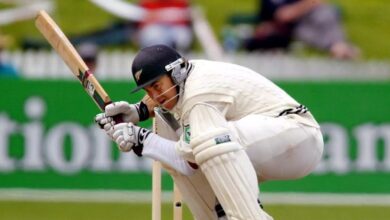Comparing Cricket Across Eras: The Evolution of the Game

Cricket is well-known for a history that has been recorded, the times it remains ancient, and as such changes have occurred in its form. The game has changed in terms of its presentation due to equipment changes, playing styles and more. This article takes a look at Cricket’s journey through different eras by comparing and contrasting some of the factors that define its development. Bet on t20 online the Best Download Indibet App and unlock the winning play!
From Underarm Bowling to Yorker Specialists: Changing Face of Bowlers
The transition between bowling styles is a testament to an insatiable thirst for wickets:
The Early Days: under-arm bowling was surprisingly popular with early bowlers focusing on accuracy and controlled swing.
The Rise of Pace: these players like Jeff Thomson and Dennis Lillee brought pace into play, thereby changing cricket forever.
Swing and Spin Supremacy: Wasim Akram in Pakistan and Shane Warne from Australia mastered swing as well spin as seen from varying seam positions and wrist actions respectively.
The Yorker Specialists: In modern times, there are specialized yorker bowlers who aim at striking the batsman’s stumps during death overs.
Willow Warriors: Batting Transformations Across Ages
Batsmanship has also greatly changed:
The Age of Elegance: W.G. Grace was one among the inaugural batters whose technical finesse relied on long innings?
The Power Play Era – The introduction of T20 cricket has created a new generation of power hitters who focus more on strength along with how far they can hit the ball across the boundary line. Every T20 betting online login is a gateway to a world of excitement, but it’s your presence that truly elevates the game to a league of its own.
Evolution of Equipment – bat design improvements such as lighter materials weight, bigger sweet spots offer more points on scoring sheets.
Innovation Takes Over – Modern day batters like AB de Villiers or Glenn Maxwell do not rely on orthodox techniques only but rather try to develop new strokes which go beyond usual borders of batting rules.
From Leisurely Strolls to Strategic Deployments: Field of Play
Fielding has changed from being passive to becoming a crucial part of the game:
Static Positions: Previously, fielders assumed stationary locations with minimal motion or rotation.
The Birth of Slips and Gully – The slips and gully were introduced to create an opportunity for layered catching approaches.
The Rise of Outfield Specialists: At present, outfielders are athletic individuals who tend to have good hands as well run faster and cover more ground than before.
Data-Driven Deployments: Fielding placements are optimized via advanced analytics based on batsman tendencies and bowler variations.
Cricket’s Changing Landscape: From Gentleman’s Game to Global Phenomenon
Changes in cricket’s social-cultural context can also be noted:
The Colonial Legacy: Cricket was initially associated with British imperialism, with participation limited mainly to European nations.
The Rise of Global Cricket: The emergence of powerful teams such as India, Pakistan, Australia, etc. has made world cricket more diverse and competitive.
The Commercialization of Cricket: The financial aspects within the game have been transformed by sponsorship deals, franchise based leagues and lucrative media rights deals among others.
Technological Advancements – Television broadcasts plus streaming services together with social media platforms have boosted accessibility globally alongside increased viewership of cricket.
Cricket’s future is woven in a tapestry of innovation and legacy. While the sport is being shaped by technology, new generations of cricketers will always be known for one thing – its sense of competition, surprise, and magic that is eternal.
As cricket keeps evolving some crucial questions are arising:
Balancing Innovation and Tradition: Can the game embrace new formats and technologies while preserving its values of sportsmanship and fair play?
Maintaining Global Parity: How can the sport ensure that nations with limited resources have an opportunity to compete on a worldwide scale?
Engaging the Next Generation: How can cricket adapt to changing audience tastes and attract younger fan bases/players?
Conclusion: A Tapestry Woven with Innovation and Legacy
The ability of cricket to adapt while still remaining popular shows how it has evolved over time. The principles around which the game revolves –competitiveness, strategy, and sportsmanship remain constant but they are played differently. By embracing innovative practices and keeping alive its tradition, cricket will still remain an art form for all ages since past generations or decades could keep sharing in the timeless spirit of this game.
Some more thoughts on the future of cricket:
The Rise of Women’s Cricket: Women’s cricket has recently become very popular making it easier to become a major player in world cricket soon.
Focus on Sustainability: Cricket needs to address aspects such as travel patterns and use of resources for sustainable growth.
The Ethical Concerns: Match fixing as well as gambling issues demand constant attention if the integrity of this game is going to continue being maintained. Hit the download, get set to bet – with download Indibet APK app, a winning streak you won’t forget
As soon as the final ball leaves the bowler’s hand there is a story that the scoreboard tells yet true essence lies in journey- change in style over years; raising stars etc., this is another way it could be said. This means that when change embraced without forgetting where we came from:
The Rise of Women’s Cricket: World-class female cricketers are now pursuing successful careers in cricket, this is on the rise globally.
Focus on Sustainability: Cricket must embrace friendly environmental approaches that lessen its ecological effect and allow for sustained growth.
The Ethical Concerns: Rigorous regulation and training initiatives are implemented to address issues such as match fixing and gambling so as to preserve the sanctity of a sport treasured by millions.
Cricket’s future is a tapestry woven with innovation and tradition. With technology transforming the sport, new generations taking up bat and ball, competition will always be there, surprises will still persist, and cricket will remain as fascinating as ever.



